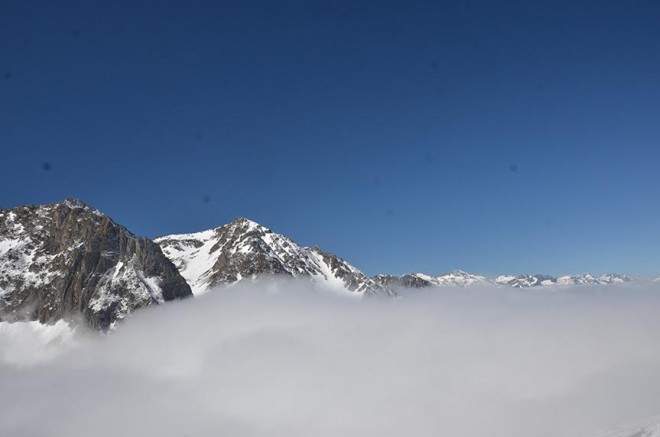I have been browsing through the Upanishads of late, enjoying their perennial wisdom and marvelling at the common ground they share with 21st century revelations about the primary nature of the universe and with modern quantum theory. The Upanishads are a summation of the knowledge, insights and sacred wisdom of the Vedic sages and seers and date back some 4,000 years.
In his introduction to selected translations from the Upanishads, Alistair Shearer writes that the Vedic teachings propose ‘the ground of all being is an infinite and unified field of Consciousness, eternal and self-luminous. This Consciousness creates the universe from its own depths, by reverberating within itself….Thus, Veda is said to be the source of creation; it is the DNA of the universe, containing all manifest possibilities in seed form.’ The Upanishadic teachings also reflect the ancient Greek understanding of philosophy or ‘gnosis’ – the cultivation of true and sacred wisdom. Plato described such a philosopher as one who would ‘live in constant companionship with the divine order of the world’.
I do remember my own teacher Sri Chinmoy speaking of the same realities, and referring to an unmanifest world of infinite potential from which everything in the manifest world originates. He often spoke of meditation as the still space of inner silence that connects us with the unmanifest– here where the identification with mind and body temporarily cease, a doorway opens between the finite and the infinite, the drop rejoins the ocean, man becomes consciously closest to God. This is the creative space as well – silence is the nest, inspiration is the bird that ventures forth and is felt as new insight, creative originality, vision.
Alistair Shearer notes that ‘upanishad’ is a derivative of SHAD and the prefixes UPA and NI, these terms referring literally to a ‘sitting-down-near’. He writes: ‘ In the India of their composition, no less than today, the seeker of wisdom approached a teacher, sat down at his or her feet, and settled the mind to receive spiritual instruction. Both teacher and pupil had to be well qualified for their relationship….the teacher was to be both “learned in the scriptures and established in brahman “– in other words, an enlightened being – and the pupil expected to be pure and receptive, “one who is calm and whose mind is quiet.” ‘
Today the Guru-disciple relationship remains foundational for many spiritual paths, and to anyone with an ardent hunger for inner knowledge and peace this relationship is a timeless and sacred one. The illumined master seldom coveys his wisdom through language, but more often through his ability to awaken the seeker’s soul; and through the silence of his gaze, the compassion of his heart, the qualities of harmony, poise and spiritual depth which he embodies. He is an artist of infinite patience, moulding the often stubborn material of our humanity into it’s highest possibilities, and using years as his time frame. Sri Chinmoy writes:
“To achieve realisation by oneself alone is like crossing the ocean in a raft. But to achieve realisation through the grace of a Guru is like crossing the ocean in a swift and strong boat, which ferries you safely across the sea of ignorance to the Golden Shore.”
The Guru is the polestar, the bright light of knowledge . He or she makes God, the soul, the spiritual quest into living realities, revealing the deeper purposes to our life and helping us to understand what is truly important in our lives, and what is not. In a world of enchanting distractions, a culture steeped in material ambitions that so often suffocate the spirit, how lucky we are to have these exemplars pointing the way back home.
Related
- Upanishads: the Crown of India’s Soul at Sri Chinmoy Library


Comments are closed.